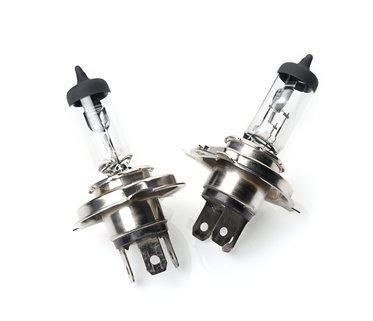Typically, motorists will only replace a headlight bulb that has burned out or is failing. However, replacing just one failed bulb can result in an

unbalanced or unpredictable headlight beam, which presents a potential safety risk. From the driver's perspective, the road ahead will not be properly lit, and the driver will not get the full benefit of the vehicle's headlights as the car maker originally intended.
From the oncoming driver's perspective, an uneven headlamp beam can create an equally risky safety issue. The oncoming car will be harder to see and difficult to position on the road. It could also be confused with a single headlight vehicle such as a motorcycle.
Replacing important auto parts in pairs is a common sense idea. Professional automotive technicians and driving safety advocates alike consistently recommend that tires, brakes, shocks, and wiper blades should be replaced in pairs to make sure the vehicle is properly balanced and functioning safely. Lighting is no different and equally as important to driver safety.
Why replace headlight bulbs when they get old?
Many drivers will only replace a bulb that has completely failed, but for maximum driving safety, an aging bulb should replaced before it burns out. The filament of any halogen headlight bulb ages with use, time, and exposure to the elements. As a result, the bulb's light output deteriorates. At the end of their typical service life, headlight bulbs project less light, and that reduces the driver's nighttime visibility.
For example, a new headlight bulb that can typically project a 240-foot beam will only be able to deliver a 160-foot beam after three years. That's potentially a whopping 33% percent less light and a critical safety concern.
Changing bulbs in pairs also makes good sense from an efficiency point of view. You only have to go to the shop once and you reduce the risk of the other headlight bulb failing while you're on the road.
Article at carcare.org April 24, 2017
For more information, visit: http://www.usa.philips.com/c-m-li/car-lights/change-in-pairs
From: Philips Automotive Lighting
